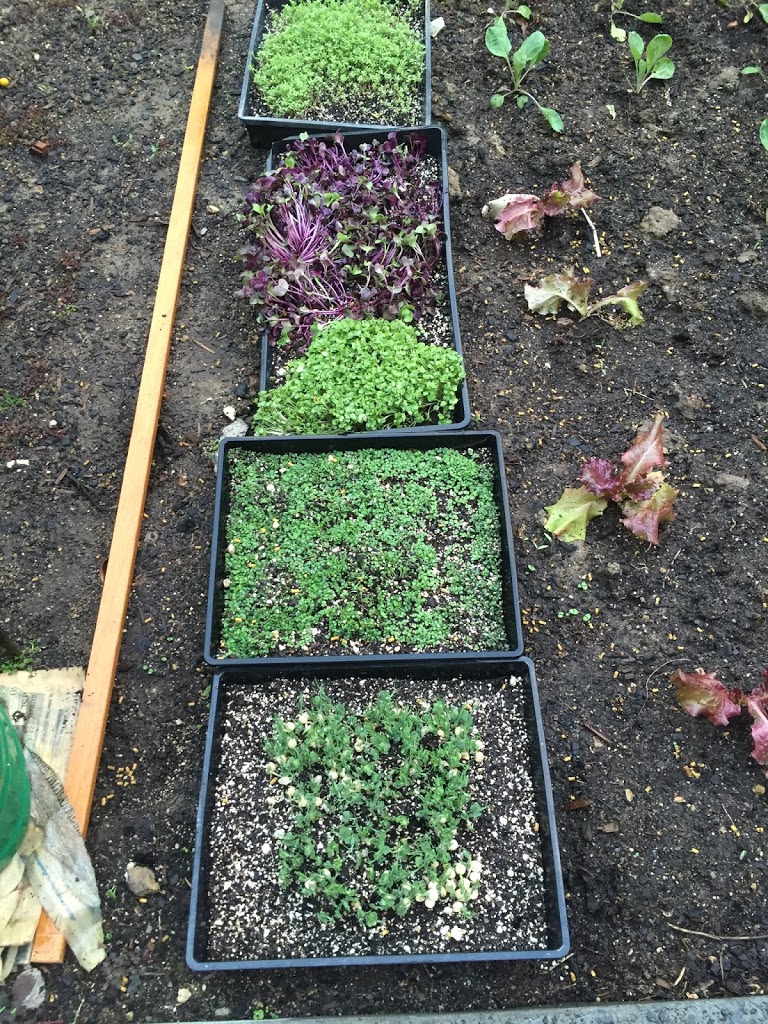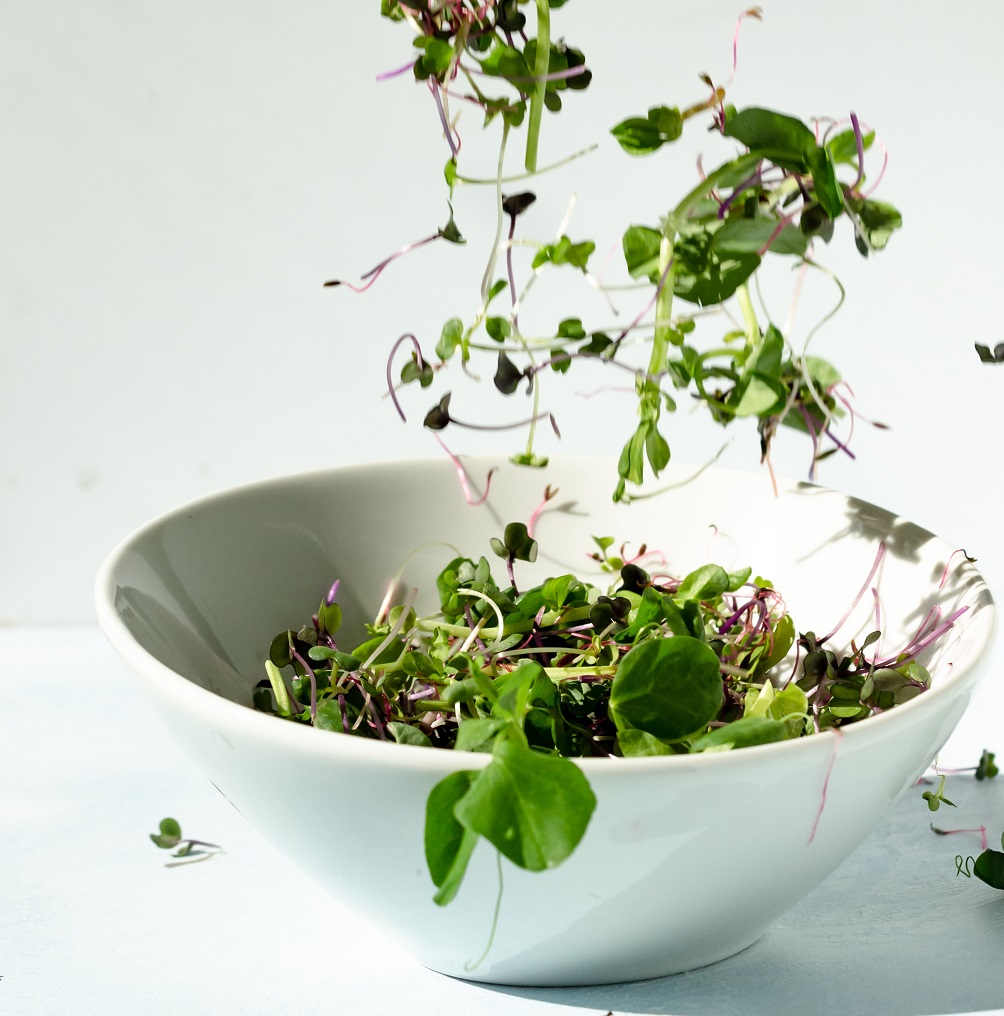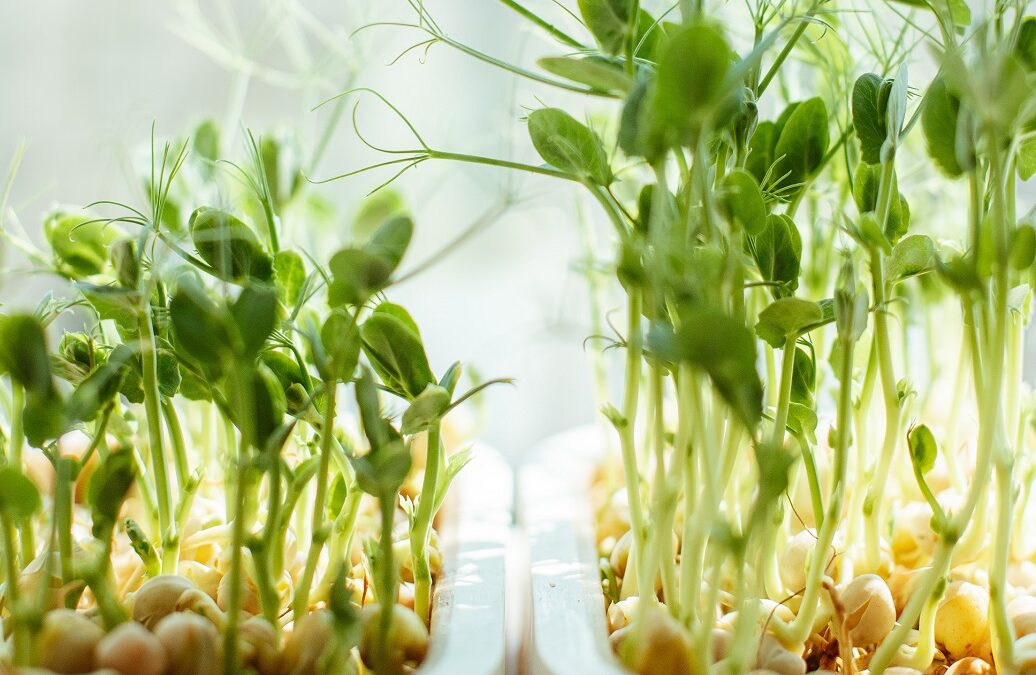Microgreens add colour, texture, flavour, crunch and class to salads, soups, sandwiches, stir-fries, pizzas, pies and dips.
These simple greens can be a cook’s delight and a gardener’s thrill. Growing is quick. The greens make delightful fresh explosions of flavour. These greens jazz up other salads or are great served on their own as a micro salad. If served tossed in lettuce as a salad, you’d chase around your plate to find the next burst of flavour.
The greens have a hint of the familiar mature vegetable. Radish and Cabbage are tangy. The peas are sweet. The herbs, like coriander and basil, give a tamer taste than the mature plants.
Reasons to grow your own microgreens
Containing on average, five times the level of vitamins and carotenoids than their adult versions, microgreens are very good for you.
If you’re limited on time, space, or lack gardening skills, then grow your own microgreens in the kitchen. It’s the perfect solution. They are cheap and easy to grow, take up little space and are usually ready in 1 – 2 weeks.
Microgreens pop their leaves up after just a few days and are ready to eat. Picking is as easy as having a sharp pair of kitchen scissors to snip the tops, ready to add to any meal.
Some favourites are radish, red cabbage, rocket, basil and mustard, coriander, and peas.


Growing microgreens step by step
Microgreens are easily started in a seed tray, or egg trays, which last long enough for one batch. Simply add some organic seed-raising mix, spread 100 or more of the seeds over the soil, and gently mix them in. There is no need to push them down. Then water them, cover them with wet newspaper and wait. In the first 48 hours, they will start to sprout. Keep the paper wet and the soil damp during this time. Put them on your deck, doorstep or windowsill where the sun shines in. They will love the warmth and the light. Once sprouted take the paper away and let the sun do its work. Make sure they do not dry out. In 5 to 7 days, they are ready to cut. Keep eating them even when they become baby greens; they are just as tasty. Microgreens contain considerably higher levels of vitamins and carotenoids—about five times greater—than their mature plant counterparts. Red cabbage, cilantro (coriander), garnet amaranth, and green daikon radish had the highest concentrations of vitamin C, carotenoids, vitamin K, and vitamin E, respectively. Most seed retailers will have packets with larger quantities of seeds pre-packaged for the purpose of growing microgreens.
Self-seeding is also a good reliable source of microgreen seeds if you are spray-free conscious. It’s easy enough if you have room to sit the tray of greens outside somewhere.
Simply continue to water and allow the plants to mature. At some point, they will flower and go to seed. Then you can harvest the seeds, dry them and start again.

